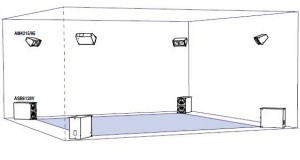Site Analysis: On-site Research of Your Location
This is the second of a series of posts to help you complete the upcoming site analysis assignment. This post will help you think about some of the components of the on-site analysis. This is a component worth equal weight as the historical analysis, but it is slightly longer in order to give you space to include responses from the people you interview. More information about interviewing will be provided in the next post, and we will talk about it in class on Thursday.
The purpose of this part of the assignment is to engage in an analysis of the place of music at a particular site. This should involve you taking into account the following elements: the physical architecture of the site, the placement of various media (lights, screens, speakers) with an emphasis on music within the site, and the way in which sound plays a role in complimenting or structuring the way that this physical space is used.
This part of the project will likely involve multiple visits to the site. During these visits you should be observing the interaction between the elements above and how the place of music contributes to the experience and use of the space. Your goal, recalling Cohen’s ethnography, is to provide an account of how this space might be experienced by individuals and groups passing through.
1) This should involve mapping the space, the way in which it is divided into levels or how furniture contributes to particular kinds of activities.
2) Considering, recalling Schafer, the extent to which music and sound serves to compliment the spatial setting. Does the positioning of speakers contribute to different levels of sound, and perhaps allowing for different kinds of activities?
Two Kinds of Findings:
Interpretation of Space: The French social theorist has claimed that space is produced, not given. Provide an account of how the space is produced by interpreting your observations of the site you are analyzing. What are the physical, media, and musical factors that have produced the space in which you find yourself.
Interviews: Some of what you will be finding may only become apparent from talking with people who are present at that space. As will be explained in greater detail in the next post, this should not involve stating the above and asking them what they think. You should rather allow them to talk about the space, why they go there, if they go there frequently, their experience of music in that location. Rather than forcing them to answer the research questions of this assignment (which will result in unreliable findings), follow Cohen’s lead in her ethnographic study about allow people to expand on their experience.
Supporting your Argument
You can use media clips to support your findings. This can include photos and videos. However, before you do this, you should be aware of the policy for taking photos in the site where you are. Some locations, particularly retail spaces, sometimes frown on people taking photos. If somebody asks you to stop taking pictures, then immediately do so. Do not take photos of other people without their written consent.
More about interviews and working with people will be in the next post.

Room with Speakers: What happens next?
